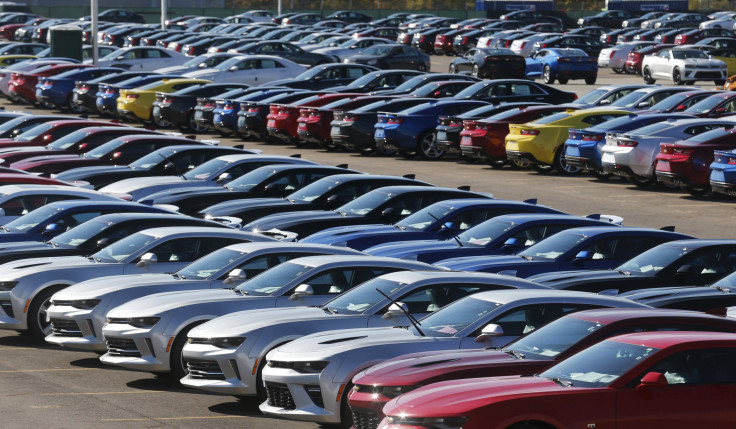January 2016 US New Auto Sales: Best Start To A Year Since 2006 As Demand For SUVs, Trucks Continue Unabated

U.S. auto sales were better than expected in January as automakers benefited from lower unemployment and rising consumer confidence. Overall, the automotive industry reported its best January since 2006.
U.S. new-auto sales ticked down 0.4 percent last month as the impact of the big winter storm Jonas chilled sales. Analysts had predicted a slightly steeper decline in sales for the month.
While average car prices are up, largely because SUVs and trucks typically cost more than sedans, automakers are also spending more on incentives to make the sales. The average transaction price increased 2.8 percent in year-to-year in January, to about $34,100, according to Kelley Blue Book, and so did incentives.
“While transaction prices are up, incentive prices are also rising,” said Alec Gutierrez, senior market analyst at Kelley Blue Book. “They’re up in the neighborhood of $100 to $150 per unit, a nearly 3 percent increase.”
This suggests automakers are spending more to make sales as the industry emerged from the sixth consecutive year of new-auto sales growth. This could be a sign that we’re approaching the peak of an unprecedented multi-year sales growth cycle. Most estimates say 2016 will be another year of growth.
General Motors
The world’s third largest automaker reported near-flat sales in January. The Cadillac and Chevrolet divisions saw significant drops, while Buick and GMC deliveries rose on demand for mid-size pickups and small SUVs. But GM said it was its best January in eight years. The first month of the year is typically the weakest month for U.S. new-auto sales.
“Well-managed inventory levels, firm used car pricing, good credit availability and low fuel prices will support higher industry sales in 2016,” Mustafa Mohatarem, GM’s chief economist, said in a statement. “In addition, household balance sheets are strong and the labor market continues to improve.”
Ford Motor Company
Ford sales fell 3 percent in January, to 173,723 units, compared to last year, as SUV and truck sales weren’t enough to offset a large drop in sedan deliveries. Truck sales were flat on lower demand for the F-Series pickup truck, Ford’s most important model and the nation’s bestselling vehicle.
But Mark LaNeve, Ford vice president of U.S. sales, said in a statement that F-150 truck sales have been boosted by higher demand from commercial operations. Business orders for pickup trucks are closely linked to construction activity and consumer confidence.
Ford Edge midsize SUV sales jumped 26 percent to 9,533, while deliveries of the larger Ford Explorer SUV dropped 5 percent to 14,266, in line with a trend toward smaller SUVs. Ford sedan sales plunged 13 percent. Ford Fusion, the company’s most popular car eked out a 1 percent gain to 19,877.
Fiat Chrysler Automobiles
Lifted by demand for Jeeps and its Dodge and Chrysler minivans, Fiat Chrysler Automobiles reported a 7 percent sales increase in January compared to the same month last year.
The Jeep brand had its best January ever with a 15 percent increase fueled by robust demand for Jeep Compasses and Jeep Patriots and despite a drop in momentum for Jeep Wrangler, which hasn’t seen a complete redesign since 2007. A pickup truck version of the Wrangler is due out in 2017.
The Dodge label saw a nearly 20 percent gain, helped by the Dodge Caravan minivan Charger muscle car. Chrysler 200 mid-sized sedan sales pulled the Chrysler brand down despite strong growth in Chrysler Town & Country minivan sales.
© Copyright IBTimes 2024. All rights reserved.






















